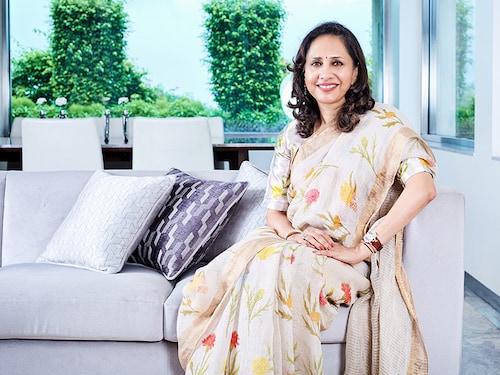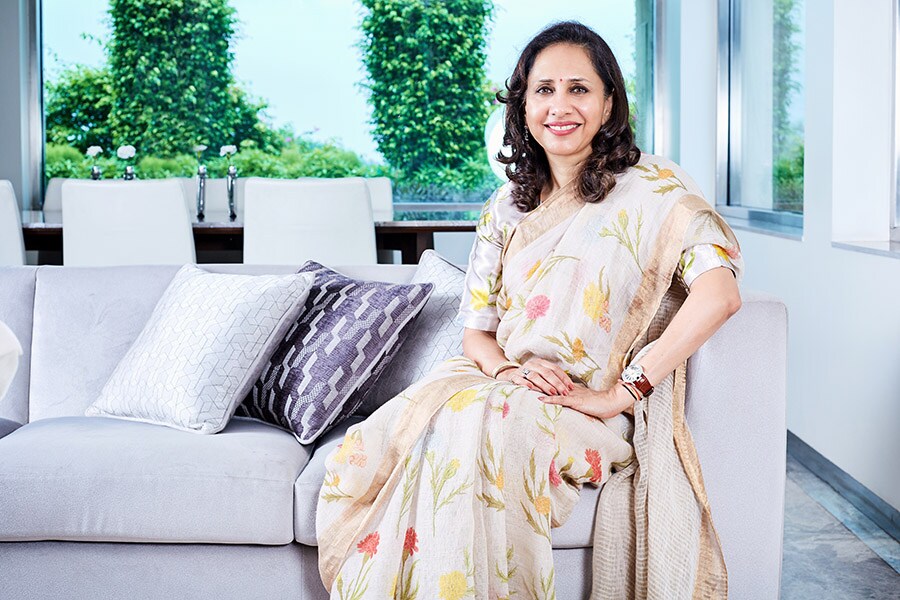'I never started this business for money': Deepikaa Jindal
JSL Lifestyle's Deepikaa Jindal on the evolution and expansion of its home lifestyle stainless steel brand Arttd'inox


 Deepikaa Jindal, creative director and managing director of JSL Lifestyle, a subsidiary of Jindal StainlessFrom being on the verge of shutting down a decade ago to now finding itself in a hyper-expansive mode, home lifestyle stainless steel brand Arttd’inox is set to make the most of global repulsion of plastic and consequent renaissance of stainless steel as an environment-friendly option. In an interview with Forbes India, Deepikaa Jindal, creative director and managing director of JSL Lifestyle, a subsidiary of Jindal Stainless (revenue of Rs12,612 crore in fiscal 2019), contends that the consumer facing brand of JSL Lifestyle is set for an aggressive push across the country. From being confined to just two cities—Delhi and Bengaluru—in 2008-09 to being present in 15 cities today, Arttd’inox is eyeing a presence across all major cities by rolling out a wider range of designer kitchen, tableware and home décor products. Edited excerpts:
Deepikaa Jindal, creative director and managing director of JSL Lifestyle, a subsidiary of Jindal StainlessFrom being on the verge of shutting down a decade ago to now finding itself in a hyper-expansive mode, home lifestyle stainless steel brand Arttd’inox is set to make the most of global repulsion of plastic and consequent renaissance of stainless steel as an environment-friendly option. In an interview with Forbes India, Deepikaa Jindal, creative director and managing director of JSL Lifestyle, a subsidiary of Jindal Stainless (revenue of Rs12,612 crore in fiscal 2019), contends that the consumer facing brand of JSL Lifestyle is set for an aggressive push across the country. From being confined to just two cities—Delhi and Bengaluru—in 2008-09 to being present in 15 cities today, Arttd’inox is eyeing a presence across all major cities by rolling out a wider range of designer kitchen, tableware and home décor products. Edited excerpts:
Q The world is moving away from plastic. Do you reckon it will result in renaissance of stainless steel?
We are at a crucial stage when people are looking for more options. And luckily, we have a material—stainless steel—which is environment friendly, recyclable and hygienic. It has no carcinogenic properties. It’s good for everyone. Arttd’inox, which means ‘art in stainless steel’, is committed to creating an aspirational stainless steel culture and making life experiences richer by infusing modern sustainabilities into stainless steel products. The brand is getting good traction and we are gearing up for major expansion in terms of cities and new products in 2020. For the March-ended 2019 fiscal, JSL Lifestyle clocked revenues of a little under Rs400 crore. Though Arttd’inox is still a small portion in terms of overall revenue contribution to JSL Lifestyle, it is set to increase its play and appeal.
Q You started a decade ago. What have been your top learnings?
Stainless steel is not an easy business to enter into and survive, especially in the segment that we operate in. Why do you think nobody has entered this domain? It’s not easy. When we started in 2003, stainless steel was never a designer’s product. It was a new business, there was no organised player, and nobody knew about the dynamics. I was in my late 30s then and had no clue of business, product or design. I just grabbed at the opportunity. In fact, we were much ahead of time by venturing into this business. We opened stores at all high streets when offline retail was at its peak.
Q Did going big early backfire?
Since Arttd’inox was a brand, we could not have gone ahead in a small way. So we opened new stores. Since online was not prevalent, we had to open big state-of-the-art stores in big cities and at prime areas. In fact, the rentals and sales never matched. We were managing as long as JSL was putting money in the venture. But after 2007-08, there was a global slowdown, including in India, and there was a huge problem. We faced a lot of financial issues. Even when I was short of funds, I didn’t go for outside investments because this business is like a passion for me. When you are working for someone, you are like a slave. Though I know that the business has to make money, I never started this business for money. It was all passion. I wanted to do this in my own traditional style. So it took so long.
Q Was the perception of being costly an issue? Also, awareness about stainless steel being fashionable was missing…
Our price points are reasonable. The perception somehow was that we are expensive. But we were not. We are well priced, and with a good product. The consumers were sceptical. The buyers found steel to be expensive. To survive, we even turned into contract manufacturers and vendors. It was no longer about the brand, but more about consolidation of the plant, the machineries and people. At least we had a regular business. The first big contract came from Whirlpool in the US. The primary goal for us was to survive on our own rather than depend on JSL.
Q The business had a near-death experience…
We were on the verge of closing. We had become almost zero. We downsized our businesses, re-looked at our strategies, and shut most of the retail outlets. We survived. It was like a rebirth for us.
Q How do you look at success and failure?
Failure has made me whatever I am today. It’s helped me change from the core. It’s helped me answer a lot of questions which you sometimes don’t address. At some point in life, one has to make a choice. You either go down or you go up. I went through this phase, and it shaped my identity. As a homemaker, I was in a house with strong personalities around. When you get an opportunity and you fail, you feel intimidated. I was a meek individual who didn’t have a voice of my own. The brand became my identity.
First Published: Dec 23, 2019, 12:50
Subscribe Now